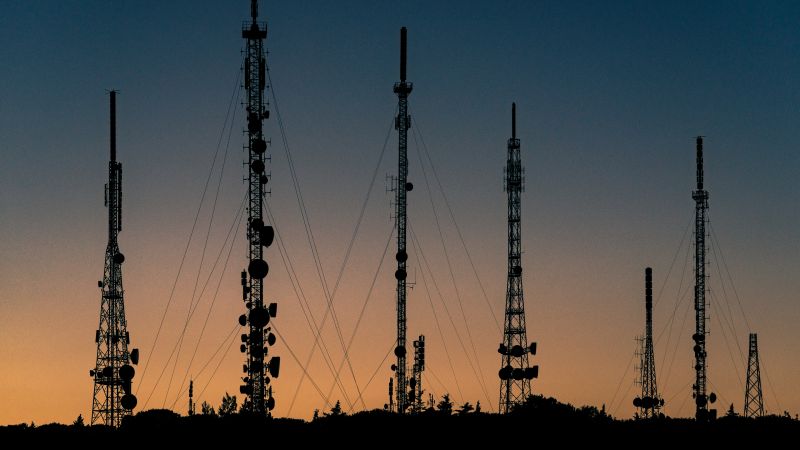Stable telecommunications are the basis of today’s digital infrastructures, but electromagnetic ‘noise’ can often interfere. Neil Alford explains how the MASER developed by him and his team tackles this problem and holds many exciting possibilities.
Noise is the bane of electronic engineers. The microwave technologies that underpin today’s communications infrastructure – from satellite networks to Bluetooth to 4G – are all susceptible to electromagnetic interference, or “noise.” We’ve all experienced microwave noise: unexpectedly dropped calls, crosstalk and Wi-Fi that grinds to a halt. We see it on our TVs and hear it on our mobile phones and radios.
In an age where large amounts of data travels at incredible speeds, we are increasingly dependent on accurate, reliable, and secure communications. Countries with better communications infrastructure experience faster rates of economic growth, and the rapidly falling costs of data connections means that the number of services built around connected devices can only increase. As more devices attempt to communicate, this noise will only get worse.
The research conducted by our group aims to solve this noisy problem. For many years we carried out research on things called dielectric resonators. These are small cylinders of nonconductive material (like a ceramic and a crystal) that can ‘resonate’ in a microwave field. To understand what resonating is, just imagine you are holding a tuning fork. Hit a tuning fork and it resonates for a long time – you can hear the sound, maybe even see the vibrations. Because of this, we say that the tuning fork has a high Q factor. But if the tuning fork were made of, say, wood, it would not resonate – it would have a very low Q factor. A high Q factor means that the stored energy in the device is far higher than the energy let out into the environment. This is related to the “noise” mentioned above - the higher the Q of the dielectric resonators, the lower the noise. Understanding the losses in the dielectric resonators was an important part of the discovery of the room temperature maser.
Engineering electronics that are resistant to noise is technically possible but has always been costly. An early example of a promising noise-limiting technology is Townes’ maser, discovered by Charles Townes in the 1950s. MASER stands for Microwave Amplification through Stimulated Emission of Radiation and is a sister technology to the laser (which stands for Light Amplification through Stimulated Emission of Radiation). Similar to laser, where light is being amplified, in a maser, it is microwaves that are being amplified. The maser, however, has had little widespread technological impact because it is inconvenient to use and can only function in high magnetic fields, in a vacuum, and at temperatures close to absolute zero (-273°C). With little prospect of mass production, miniaturisation, or of cost reduction - the three things any mass-technology requires to succeed - it was not surprising that the focus of attention shifted a few years later, when the laser was discovered. Lasers can operate in the earth’s magnetic field and at room temperature. With time, the laser has become a several billion dollar industry, used everywhere from supermarket checkouts to CD players to laser eye surgery.

Nonetheless, we have recently discovered a new design for a maser that uses a dielectric resonator and which can overcome the issues listed above. Our breakthrough means that there is no need for applied magnetic fields or cryogenic cooling – the two things that have prevented widespread adoption in the past. This means that the cost to manufacture and operate masers could decrease dramatically, paving the way for their widespread integration into telecommunications. We discovered that a completely different type of crystal, namely p-terphenyl doped with pentacene, can replicate the same masing process at room temperature and we published this in Nature in 2012.
The challenge the team then faced was getting the maser to work continuously. The pentacene maser device only worked in pulsed mode for fractions of a second at a time. This was partly because of the spin dynamics and mainly because, even if it was capable of working continuously, the laser used to illuminate the p-terphenyl / pentacene would have melted it. We started looking at inorganic materials and there are several that have the right sort of defect states, notably diamond. There is a great deal of research into diamond with nitrogen vacancies (NV) and although 40 years previously it had been suggested that such a material would mase, no one had managed to do it. With our background in microwave engineering we were able to make a microwave cavity with the right microwave dielectric resonator and then made another breakthrough – continuous mode masing in diamond! This was published in Nature in 2018.
When lasers were invented, no one knew exactly how they would be used; yet they are now ubiquitous. Today, we can foresee additional applications for the re-engineered maser that include more sensitive medical scanners, chemical sensors for remotely detecting explosives, advanced quantum computer components, and better radio astronomy devices for potentially detecting life on other planets. In the near term, the discovery of a room temperature maser solves a real-world challenge. It promises better communications that are resilient to the growing problem of noise in our connected, and increasingly crowded infrastructure.
For a more visual understanding of the room temperature maser, visit Nature’s video.

Something similar:
by Oscar Williams
How can the behaviour of a single atom provide insights into our energy demands? How do we know that atoms actually exist? And what on Earth do the acronyms XPS, STM and UHV stand for? If you find yourself wondering ...
Something different:
by Gaelle Coullon
Human beings are natural explorers. We like to discover strange new places and make maps of the worlds we find. However, one particular world that we have yet to fully discover lies nestled within our own heads. The human brain ...